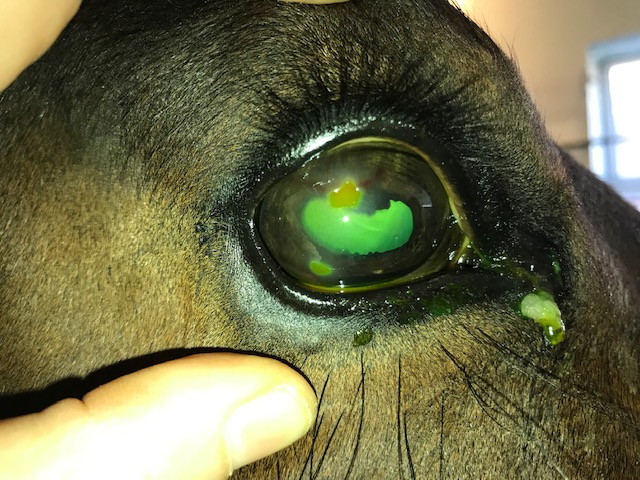This weeks blog has been inspired by the several eye cases we've had over the last few weeks! We'll go through some of the common eye conditions we see and why it is so important for them to be checked by a vet....
Conjunctivitis
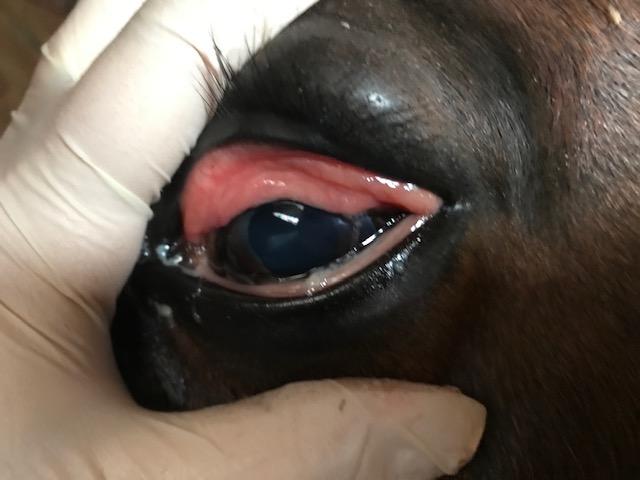
This occurs when the pink areas lining the inside of the eyelids (conjunctiva) becomes inflamed or infected causing runny eyes. This can happen for a number of different reasons including:
- Bacterial infections
- Irritants- wind/dust/flies!
- Trauma
- Foreign bodies
- Allergies- pollen for example
- Tumours or parasites
Treatment depends on the cause but usually involves non-steroidal anti-inflammatory drugs such as bute in addition to treatment for the cause.
Corneal Ulceration
This occurs when the surface of the eye (cornea) is damaged in some way- often by scratches from brambles or trauma to the eye itself. Corneal ulcers can be very deep and if left untreated can lead to loss of the affected eye in very severe cases. They are often very painful and require urgent veterinary treatment.
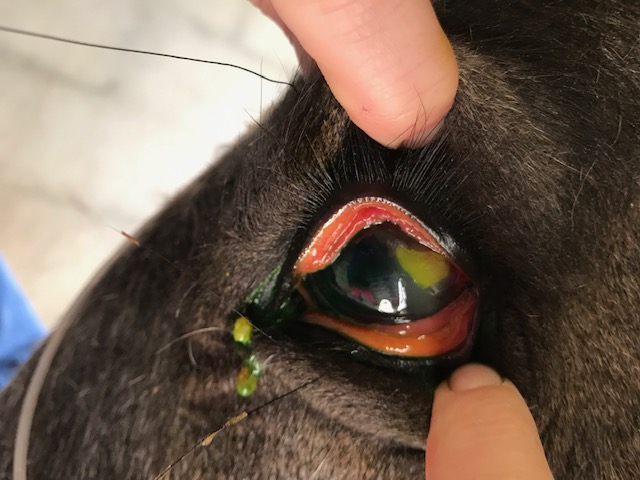
Clinical signs include:
- Streaming tears
- Eye can be almost closed and avoiding bright lights
- Pupil constricted
- Swollen eye or red conjunctiva

Treatment for corneal ulceration is non-steroidal anti-inflammatory drugs such as Bute to manage inflammation, chloramphenicol or another suitable antibiotic applied topically and plasma in addition to this. Depending on the depth and size of the ulcer further treatment in the clinic or at a referral centre may be required.
Uveitis
This condition affects an area of the eye called the uvea which contains three seperate structures, the iris, the ciliary body and the choriod. This can be a primary or secondary condition and primarily presents with eye pain, the eye is usually almost closed and can be streaming.
Differentiating between corneal ulceration and uveitis is VERY important- we can have uveitis secondary to corneal ulceration and this usually resolves after treatment of the ulcer. However the condition can become recurrent and lead to severe pain and loss of vision.
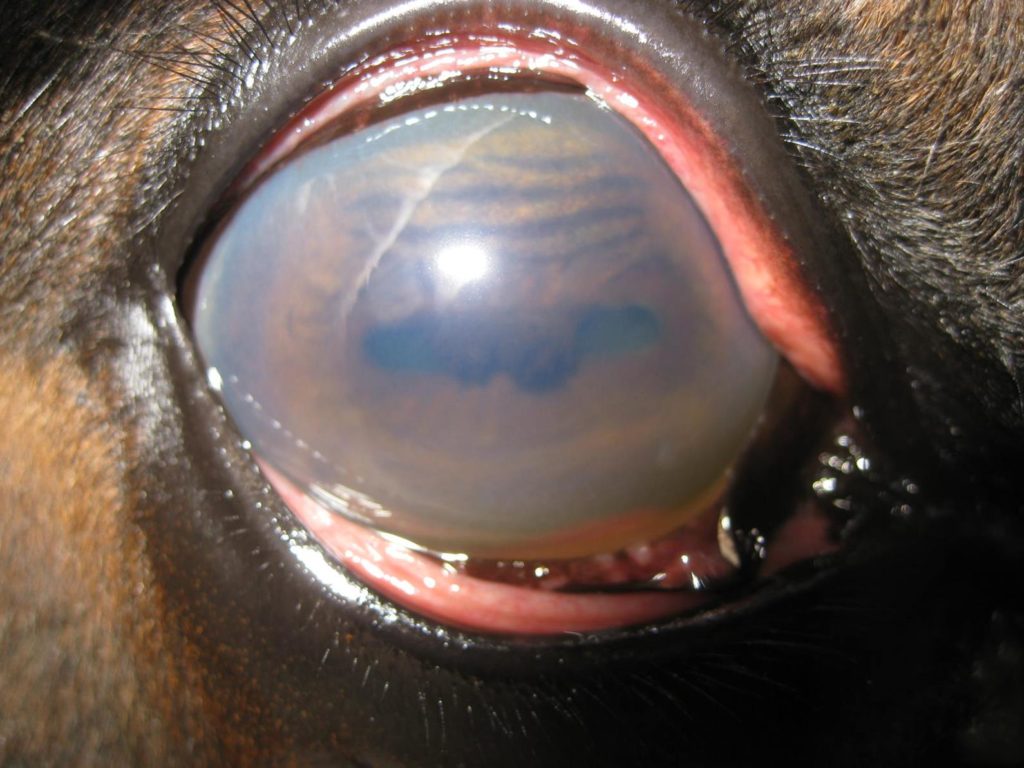
Treatment for uveitis typically includes topical steroid drops, oral non-steroidal anti-inflammatory medication and topical atropine if required. Surgical options may be recommended for recurrent uveitis.
Cataracts
This condition describes opacity affecting the lens. Cataracts can be congenital (born with) or developmental in foals and in adults can be acquired later in life or secondary to recurrent uveitis.
Cataracts can minimally impair vision or cause complete vision loss, 5-7% of horses with otherwise normal eyes will have cataracts. They can progress or remain unchanged for years depending on the type, location and age of the horse when initially diagnosed. Typically cataracts acquired as adults or due to recurrent uveitis will progress and deteriorate. Senior cataracts can also occur often in both eyes in older horses.
Surgery can be performed to remove and replace the lens in appropriate cases
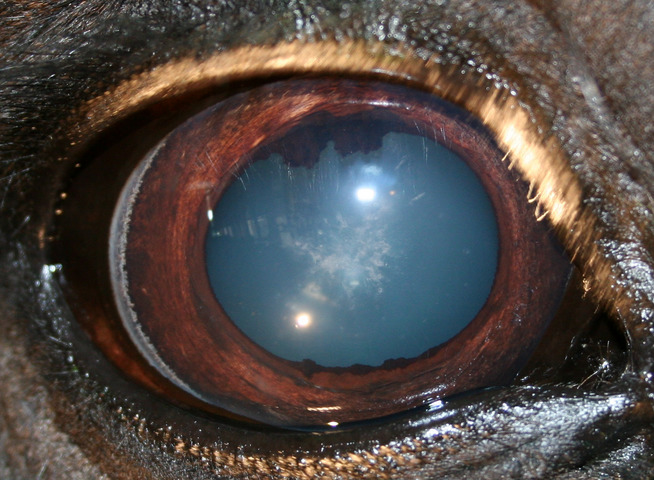
As you can see there are lots of conditions affecting the eye which present as either a painful or runny eye. It is important to seek veterinary attention immediately if you notice any of the above signs. Eyes can deteriorate very quickly and if left untreated lead to removal of the affected eye in severe cases.
If you have any questions about eyes please don't hesitate to contact us on 07747 771182. Have a great weekend everyone! Alex
